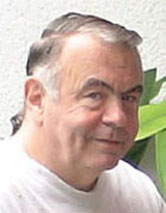Keith Warne Organization
A Dedication
Gazed upon benignly, benevolently and wistfully by our founder, this site is earnestly dedicated to the noble ideal of resolving problems and disadvantages that may be experienced, from time to time, by our deserving and worthy patrons. Should you feel overburdened by capricious fortune or ill-used by the modern monsters of society, feel free to contact us. We will certainly listen to your story and who knows; perhaps we will be able to slay the dragons that invade the usually tranquil nature of your reverie.
Coming Clean
If, as I do, you like the design, layout and colouring of this web site, I must tell you right away that the founder can claim no credit for this. He lifted it directly from a technical site, which deals in the implementation of nifty CSS (Cascading Style Sheets) menu systems. This original site can be viewed at meyerweb.com. It's all stylish, validated HTML and CSS, period, end of story.
The Close Family - as opposed to extended
A collection of photos taken at the founder's home in Manila. These interactive images depict the family on an average Sunday during the cooler winter period. As you can see no one is using the swimming pool as the water is quite cool. Soon the temperatures will rise and the electricity costs will soar as air conditioners are flung on to left and right.
Again I say it: no Javascript was used in the making of this page.
Technical Note (on the menu system)
Here's how it's done. In every case, the "caption" text is a span element inside the actual hyperlinks. Here's one example from the source of this document:
<a href="http://www.meyerweb.com/eric/css/">Links<span>A collection of things which interest me, and might interest you</span></a>
To prevent the text from showing up when the page loads, I have the following style:
div#links a span {display: none;}
So they're gone, removed entirely from the document flow. Bringing them back, then, is a simple matter of switching the display to block and positioning the element whenever the associated link is hovered over with the mouse pointer. Thus we get the first two lines of this rule:
div#links a:hover span {display: block;
position: absolute; top: 200px; left: 0; width: 125px;
padding: 5px; margin: 10px; z-index: 100;
color: #AAA; background: black;
font: 10px Verdana, sans-serif; text-align: center;}
The last three lines relate to how the element will be styled when it appears, but the first two cause it to be made visible (display: block;) and position it appropriately.
Want to have even more fun? How about icons that appear on rollover?
